
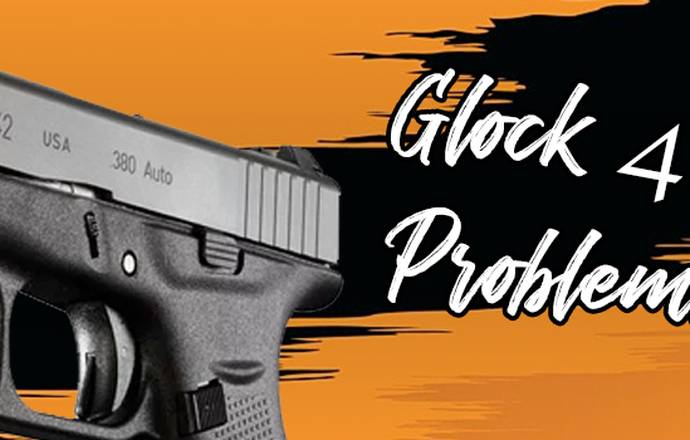
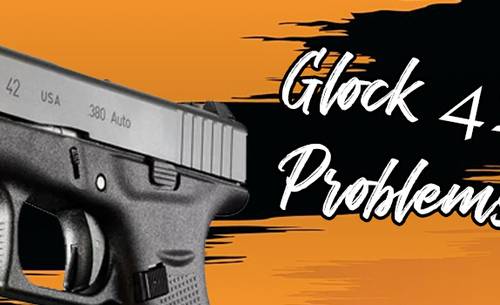
What has 4 more problems than rounds in a mag? The Glock 42...
Anyway, The Glock 42, chambered in .380 ACP, was highly anticipated when it hit the market. Glock enthusiasts and concealed carry permit holders were eager to get their hands on this compact pistol, known for its legendary reliability. However, as with any new firearm, the Glock 42 experienced its fair share of teething problems.Early adopters of the Glock 42 quickly discovered a range of issues, from failures to feed and failures to eject, to issues with the slide not locking back after firing the last round. Some users even reported ammunition sensitivity problems, with certain brands or loads causing frequent malfunctions. This led to a wave of frustration among Glock aficionados who had come to expect flawless performance from their firearms.
However, it's not all doom and gloom. Glock, Inc. is known for standing behind their products, and many of the initial problems with the Glock 42 have been addressed. Updates and modifications have been made to tackle these issues head-on, ensuring that the Glock 42 problems are fixed, delivering the reliability and performance that Glock owners have come to trust.In this article, we'll delve into the various glock 42 problems that early Glock 42 adopters encountered, explore the fixes implemented by Glock, Inc., and discuss how these improvements have transformed the Glock 42 into a dependable concealed carry option. Whether you're a Glock enthusiast or considering the Glock 42 for personal defense, understanding its journey from teething problems to a reliable sidearm is crucial.
Glock 42 Problems, Their Causes & Fixes
This comprehensive guide dives into the top 10 glock 42 problems faced by owners, shedding light on their root causes and providing practical solutions. From failures to extract and double feeding to limp-wristing and ammunition sensitivity, we will explore these challenges in detail. By the end, you'll not only be well-versed in glock 42 problems but also armed with the knowledge to address them effectively. So, let's delve into the world of the Glock 42 and uncover the solutions to ensure your concealed carry piece performs flawlessly when it matters most.
#1 Glock 42 Problem: Failure To Extract
One of the common glock 42 problems, this occurs when the extractor fails in its primary task, which is to pull the fired cartridge case from the chamber so that it can be ejected effectively. Instead, the case remains stuck in the chamber, rendering the pistol inoperable Causes: Several factors can contribute to this problem. A dirty or fouled chamber can impede the smooth extraction of spent cases. Damage to the extractor, the small claw-like component responsible for gripping the cartridge case, can also hinder its ability to function correctly. Additionally, a weak extractor spring may not provide the necessary tension to pull the case from the chamber. Solutions: To address this glock 42 problem, regular cleaning and maintenance are crucial. Keeping the chamber clean and free of debris helps ensure smooth extraction. Frequent inspection of the extractor for damage or wear is advisable. If damage is detected, replacing the extractor with a new, high-quality component can resolve the issue. Additionally, if a weak extractor spring is identified as the problem, replacing it with a stronger spring can improve extraction reliability. By addressing these potential causes, Glock 42 owners can mitigate the failure to extract and enjoy improved overall performance from their pistols, ultimately resolving this glock 42 problem.
#2 Glock 42 Problem: Double Feeding
Double feeding occurs when two live rounds simultaneously attempt to feed into the chamber, causing a malfunction that can be frustrating and potentially dangerous. Causes: Several factors can contribute to this problem. Magazine issues, such as damaged or worn-out magazines, are a common culprit. Weak magazine springs may fail to apply sufficient force to ensure proper ammunition feeding, resulting in double feeds. Additionally, using improper or low-quality ammunition can exacerbate the issue. Solutions: To address double feeding, a systematic approach is necessary. Begin by inspecting your magazines thoroughly. Look for signs of damage or wear, and replace any magazines that show problems. Replacing weak magazine springs with new, high-quality ones can significantly improve the feeding process and reduce the occurrence of double feeds. Lastly, always use reputable, high-quality ammunition in your Glock 42 to minimize the chances of double feeding and ensure smooth, reliable operation.
#3 Glock 42 Problem: Limp Wristing
Limp wristing refers to a shooting technique problem where the shooter's grip is too weak or their wrist lacks the necessary rigidity during firing. This can lead to disruptions in the pistol's cycling, causing malfunctions .Causes: Limp wristing often results from inconsistent grip strength and improper wrist positioning. When the shooter's grip lacks firmness or their wrist isn't properly locked, the pistol may not cycle correctly, leading to various malfunctions. Solutions: To address limp wristing, shooters should focus on improving their grip strength and maintaining proper wrist stability during shooting practice. Regular dry fire exercises can help develop a stronger, more consistent grip. Additionally, shooters should pay attention to their wrist position, ensuring it remains locked and firm when firing. Practicing with proper techniques and grip strength can mitigate the issues associated with limp wristing and enhance the Glock 42's reliability.
#4 Glock 42 Problem: Ammo Sensitivity
Ammo sensitivity refers to the pistol's responsiveness to specific ammunition brands or loads, potentially causing feeding, extraction, or ejection problems. Glock 42s can be particular about the ammunition they digest. Causes: This sensitivity often stems from variances in ammunition dimensions, bullet profiles, and powder charges. Ammunition that deviates significantly from the Glock 42's ideal specifications may lead to issues. Solutions: To mitigate ammo sensitivity, Glock 42 owners can experiment with different ammunition brands and loads to identify the most reliable options. This involves trying various bullet types, weights, and powder charges until the pistol consistently functions as expected. Conducting regular testing and paying attention to the Glock 42's performance with different ammunition can help owners identify the ideal choice for their specific firearm.By finding the right ammunition fit, Glock 42 users can overcome this common problem and enhance their firearm's reliability, ensuring it functions smoothly in various shooting scenarios.
#5 Glock 42 Problem: Magazine Issues
Magazine issues encompass any problems arising from magazines that have suffered wear and tear, affecting their ability to feed ammunition into the pistol smoothly and consistently.Causes: These problems typically stem from the natural wear and tear that magazines undergo during regular use. Additionally, magazine abuse or rough handling can contribute to issues like weakened magazine springs, which play a crucial role in feeding rounds.Solutions: To address magazine issues and ensure reliable feeding, Glock 42 owners should make regular magazine inspection and maintenance a part of their routine. This includes checking for signs of wear, cleaning the magazines, and replacing any worn components, such as springs or followers. By maintaining magazines in optimal condition, users can reduce the likelihood of malfunctions and enhance the Glock 42's overall reliability.By proactively addressing magazine issues, Glock 42 owners can enjoy a more trouble-free shooting experience and ensure that their firearm functions as intended.
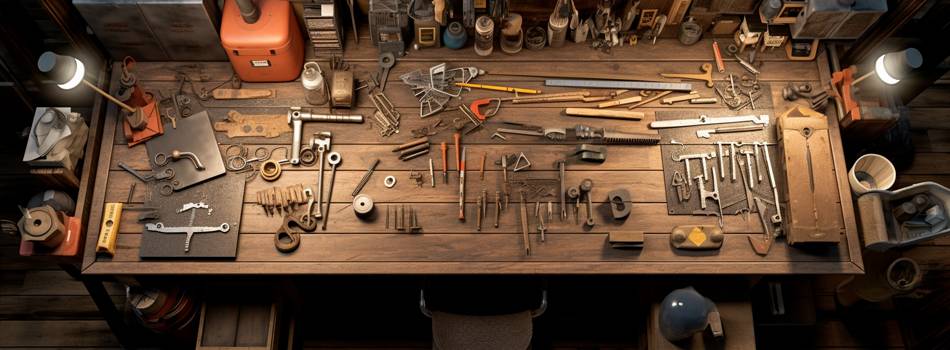
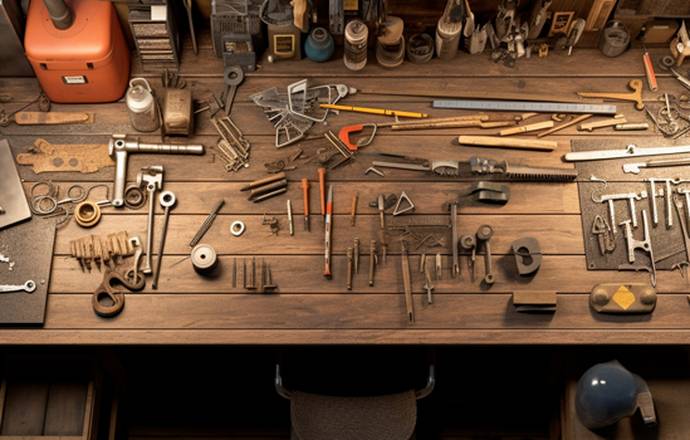
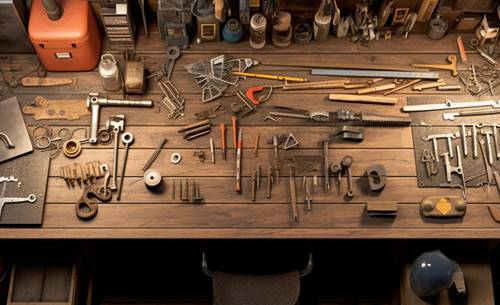
#6 Glock 42 Problem: Slide Stop Lever and Connector Replacement
This involves replacing the slide stop lever and connector, which are integral parts of the Glock's slide lock mechanism. These components play a crucial role in controlling the slide's movement and the pistol's cycle of operation. Causes: Over time, continuous use and cycling of the slide can lead to wear and reduced effectiveness of these components. This wear may manifest as issues with slide lockback, slide release, or overall firearm performance. Solutions: When faced with these problems, Glock 42 owners can explore the option of slide stop lever and connector replacement. Consulting with a professional gunsmith is advisable for proper fitting and installation of these parts, as it requires expertise and knowledge of the firearm's design. This replacement can help restore the pistol's reliability and ensure smooth slide operation.By addressing slide stop lever and connector issues through replacement, Glock 42 users can enjoy improved firearm performance and reliability, enhancing their shooting experience and confidence in the pistol's function.
#7 Glock 42 Problem: Slide Not Locking Back
When the slide does not lock back, it means that the pistol does not provide the visual and tactile feedback that typically signals an empty magazine. Shooters may inadvertently attempt to fire the pistol when it is out of ammunition, resulting in a dry fire.Causes: Several factors can contribute to this problem. Weak magazine springs are a common culprit, as they may not provide sufficient upward force to engage the slide stop lever when the last round is fired. Additionally, a malfunctioning or worn slide stop lever can prevent it from properly engaging the slide.Solutions: To address this issue, Glock 42 owners can start by inspecting their magazine springs for signs of wear or fatigue. If weak magazine springs are identified, upgrading to more robust ones can improve slide lockback reliability. If the issue persists, consulting a gunsmith is advisable to diagnose and address any potential problems with the slide stop lever. Properly functioning components in this area are critical for ensuring the pistol locks back consistently after the last shot, enhancing the shooter's experience and firearm reliability.
#8 Glock 42 Problem: Premature Slide Lock
Premature slide lock refers to the situation where the slide unexpectedly locks back after only two rounds have been fired, typically the first and second rounds from a fresh magazine. This occurrence can lead to confusion, as it interrupts the natural flow of shooting.Causes: Several factors may contribute to this issue. Magazine issues, such as improperly functioning followers or damaged magazines, can cause the slide lock to engage prematurely. Additionally, a worn or malfunctioning slide stop lever may not function as intended.Solutions: To address premature slide lock, Glock 42 owners should start by inspecting their magazines and followers for signs of damage or wear. Replacing damaged or malfunctioning components can often resolve the problem. Furthermore, a thorough examination of the slide stop lever and its engagement with the magazine follower is recommended. If wear or malfunction is detected, replacing the slide stop lever can help ensure proper functioning and eliminate premature slide lock issues. By addressing these potential causes, Glock 42 owners can enjoy a more consistent and reliable shooting experience.
#9 Glock 42 Problem: Extraction & Ejection Problems
Extraction and ejection problems refer to a range of issues during the firing cycle, including failure to extract spent casings, stovepipes (where spent casings become trapped vertically in the ejection port), or failure to eject casings entirely. These problems can result in malfunctions, forcing the shooter to manually clear the firearm.Causes: Extractor and ejector issues are common culprits behind extraction and ejection problems. A worn, damaged, or improperly functioning extractor or ejector can disrupt the ejection process. Additionally, ammunition-related problems, such as inconsistent cartridge dimensions or bullet profiles, can contribute to these issues.Solutions: Glock 42 owners facing extraction and ejection problems should begin by maintaining and inspecting the extractor and ejector components. Ensuring these parts are clean, properly lubricated, and free from damage is crucial. Furthermore, using high-quality ammunition that adheres to industry standards can mitigate potential issues related to cartridge dimensions and bullet profiles. By addressing these key factors, Glock 42 owners can enhance the pistol's reliability and reduce extraction and ejection problems, resulting in a more enjoyable shooting experience.
#10 Glock 42 Problem: Ammunition Sensitivy
Ammunition quality issues refer to instances of discoloration or corrosion on ammunition, which can potentially affect its reliability and performance. This problem is characterized by visible signs of degradation on the cartridges, such as rust or tarnish. Causes: The primary factors contributing to ammunition quality problems are poor storage conditions and exposure to moisture or contaminants. When ammunition is stored in environments with high humidity or fluctuating temperatures, moisture can infiltrate the casings, leading to rust or corrosion. Additionally, exposure to various contaminants or chemicals can accelerate the degradation process. Solutions: To address ammunition quality concerns and ensure the reliability of your Glock 42, it is essential to adopt proper storage practices. Store your ammunition in a dry and controlled environment with a consistent temperature to prevent moisture infiltration and minimize exposure to contaminants. Regularly inspect your ammunition for signs of discoloration or corrosion, discarding any compromised rounds. By taking these precautions, you can maintain the quality and reliability of your ammunition, reducing the risk of malfunctions and ensuring a safer shooting experience. Note: Ammunition quality issues, such as discoloration and corrosion, should not be confused with ammunition sensitivity problems, which pertain to compatibility issues with specific ammunition brands or loads. These are distinct problems with different underlying causes.
Glock 42 Problems - FAQ
Poor ammo, damaged mags, limp-wristing. Fix: quality ammo, check mags, firm grip.
Yes, with proper maintenance, ammo selection, and technique.
Inspect, clean regularly. Replace worn parts. Use quality ammo. Check mags.
Clean, maintain. Replace worn parts. Use quality ammo. Practice good technique. Store ammo properly.
Glock 42 Problems - Conclusion
In summary, owning a Glock 42 can be an enjoyable experience for many firearm enthusiasts, but like any piece of machinery, it's not immune to issues. Throughout this article, we've delved into common problems that Glock 42 owners may encounter, aiming to provide valuable insights into their definitions, causes, and potential solutions.These issues, such as failure to extract, double feeding, limp wristing, ammo sensitivity, magazine problems, slide stop lever and connector replacement, slide not locking back, premature slide lock, extraction and ejection problems, and ammunition quality, collectively encompass a wide range of challenges that can affect the pistol's reliability.
The key takeaway is that responsible firearm ownership involves not only regular maintenance and proper handling but also an understanding of potential issues and how to address them. The same goes for Holsters For Glock 42, picking the proper one makes a significant difference. Glock 42 owners should strive to maintain their firearms in top condition through cleaning and inspection. Additionally, investing time in improving shooting techniques, such as grip strength and wrist stability, can help mitigate certain problems.When it comes to ammunition, experimentation and selecting high-quality rounds can enhance reliability. Furthermore, keeping ammunition in a controlled, dry environment is essential to prevent corrosion and discoloration.While these problems may occasionally arise, they should not deter Glock 42 owners from enjoying their firearms responsibly and safely. With knowledge, practice, and attention to detail, many of these issues can be overcome, resulting in a more enjoyable shooting experience with this compact and reliable .380 ACP pistol.
DON'T LEAVE YET - YOU MAY FIND THESE ARTICLES READWORTHY
Glock 34 VS 17 - A Firearm Showdown
Glock 43 Review: Best CC Handgun on the Market?
